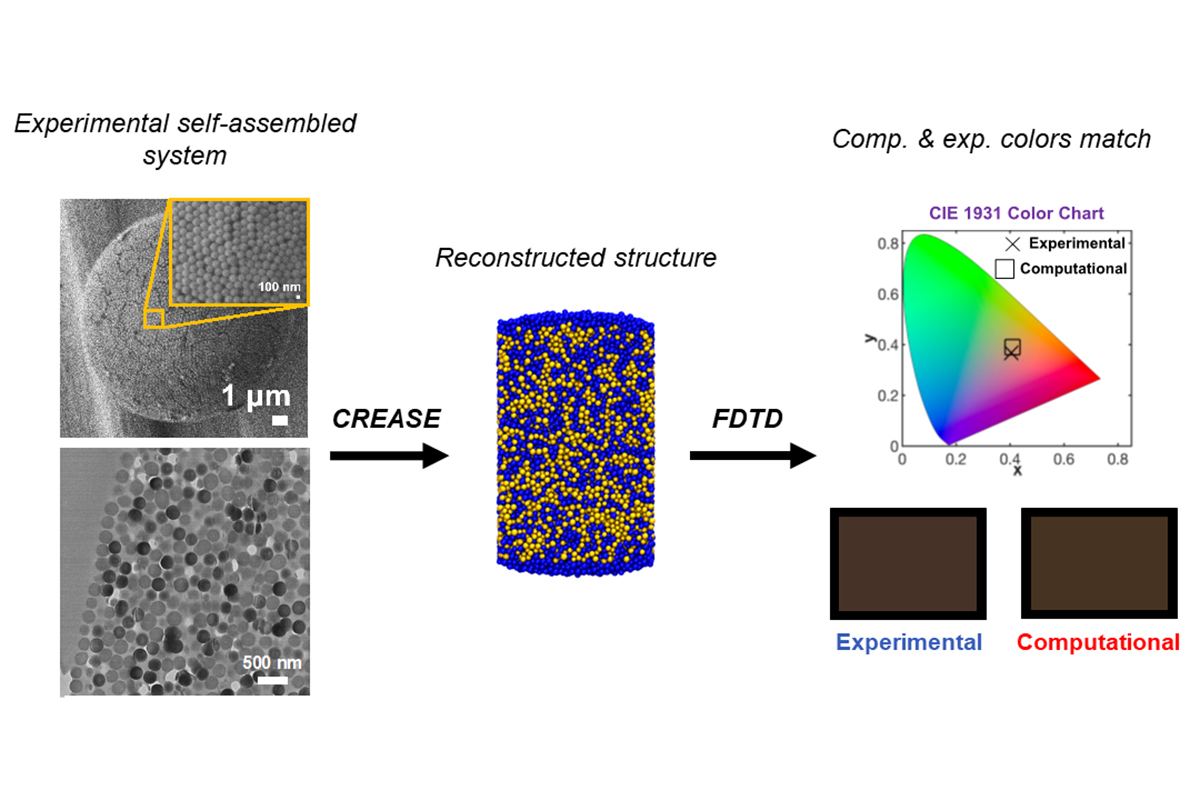Versatile computational approach allows scientists to advance the design of on-demand structural colors

In nature, especially among birds, structural colors are a predominant form of color expression for signaling and communication. These colors are produced due to the physical interaction of visible light with melanosome arrays (melanin-rich bodies) in the feather barbules. Known for their vibrant, non-toxic, and long-lasting nature, this color production strategy has now inspired scientists to fabricate synthetic versions, where the color produced is influenced by the three-dimensional structure and arrangement within the material, unlike in the case of conventional pigmentary or dye-based colors. However, the design and fabrication of desired structural colors have been challenging due to complex structure-color relationships that require a deep understanding of underlying structures, leading to cumbersome experimental trial and error.
A diverse team of researchers (including material scientists, chemists, biologists and physicists) in their new Science Advances paper presents a versatile approach of identifying color response from a material’s structure. Led by researchers from The University of Akron (Dr. Anvay Patil and Dr. Ali Dhinojwala, W. Gerald Austen Endowed Chair in Polymer Science and Polymer Engineering and H.A. Morton Professor of Polymer Science) and from the University of Delaware (Dr. Christian Heil and Dr. Arthi Jayaraman, Centennial Term Professor for Excellence in Research and Education and joint professor, materials science & chemical engineering), this work describes quantitative prediction of structural colors from multicomponent particles mixtures of strongly absorbing melanin (a synthetic mimic) and merely absorbing silica (keratin analogue).
“Until now, modeling and predicting colors from a multicomponent system was a farfetched idea and challenging to implement due to lack of structural information,” said Dhinojwala. “Our joint effort allows us to bridge this gap and open opportunities to handle complex material systems with complex optical characteristics.”
The approach involves two steps: 1) 3D structural reconstruction of material systems using computational reverse-engineering methods (developed by the Jayaraman Lab called CREASE) from small-angle scattering measurements and 2) employing the reconstructed 3D structure to perform first-principle optical calculations (called finite-difference time-domain or FDTD) to predict color. This strategy allowed the scientists to not only accurately predict experimentally observable colors, but also opened possibilities to design tints and shades and to engineer synthetic materials to produce colors that have not been observed yet.
“It is an open playground with endless opportunities to explore design space and elucidate structure-color relationships,” said Patil.
The researchers believe that the presented computational approach could serve as a high-throughput method to design programmable colors for applications in the areas of inks, paints, cosmetics, and food colorings.
“Additionally, the tool could also enable scientists to better design complex materials for applications in other regions of the electromagnetic spectrum, i.e., beyond the visible region,” said Patil.
The next phase of this research would be tackling further complex systems involving anisotropic structures and particle mixtures of different shapes that could present unique optical/photonic responses. Additionally, the researchers mentioned that the big picture goal of this venture involves tying this approach through multiscale modeling to simulate large-scale systems, both synthetic (such as packed films and pigment dispersions – relevant to industrial scales) and natural (such as bird feather macrostructures to further elucidate color generation mechanisms in one of nature’s most beautiful species to provide bioinspiration).
The above research was funded by the Air Force Office of Scientific Research (AFOSR) as a part of the Multidisciplinary University Research Initiative (MURI) program to study the chemistry, biology and nanoscience of natural and synthetic melanins. Co-authors of the study included researchers from Ghent University (Belgium), Northwestern University (USA), University of California San Diego (USA), and the National Institute of Standards and Technology (NIST) Center for Neutron Research (USA).
RELATED CONTENT:
- Learn more about Dr. Dhinojwala's research.
- Discover polymers at UA.
Story by CEPS Marketing.
Media contact: Cristine Boyd, 330-972-6476 or cboyd@uakron.edu.
